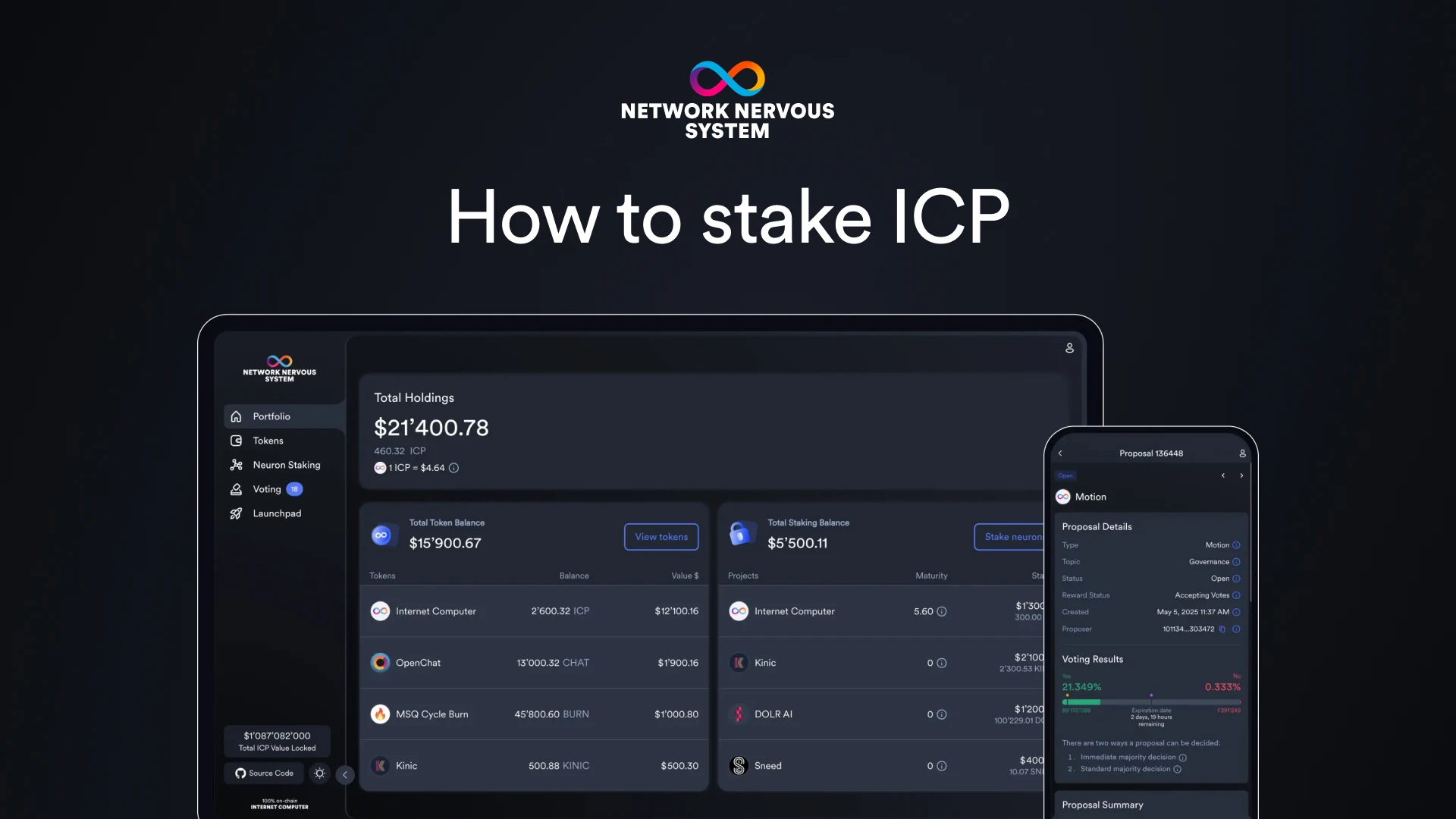Network governance
The Internet Computer is governed by the Network Nervous System (NNS), an advanced new form of decentralized autonomous organization (DAO) directly integrated into the network's workings — which also happens to be the largest and busiest DAO ever created.
Fully autonomous network administration and orchestration
The NNS acts as the brain of the Internet Computer network. Different types of proposals can be submitted, many of which the network executes completely automatically if they are adopted. For example, proposals exist to create new subnets to scale out the capacity of the internet cloud functionality, and even to update the version of the replica ("client") software run by the node machines, which traditional blockchains must update through slow and messy "hard fork" processes that create security risks.
The NNS implements a system of "liquid democracy," where "voting neurons" created by staking can be configured to vote automatically by following other neurons, allowing it to cascade to decisions, and leverages a design that makes it overwhelmingly difficult for an attacker to push through a malicious proposal.
The NNS is expanding its capabilities, and for example now plans to be the registrar and DNS server for a truly decentralized TLD domain. The network's "chain key" system grants the NNS its own 48-byte public key against which it can sign, and this anchors verification of all compute across the entire network.
Community driven
Anyone can submit proposals, but liquid democracy ensures the wishes of those staking ICP tokens are observed
Security & stability
Rigorous advanced governance algorithms prevent "ambush" voting attacks, and ensure actions are consistent
Rapid evolution
The Internet Computer can adapt and upgrade autonomously, providing for rapid technical evolution
Transparency
Proposals are processed onchain, where the logic and data is tamperproof, and the results transparent and unequivocable
Staking and voting
To participate in network governance, users can create "voting neurons" and grant them voting power by locking ICP tokens inside. These neurons gain maturity when the vote, which can be used to generate new ICP tokens later. Voting neurons can be configured to vote automatically by following other neurons in a system of liquid democracy, which allows the NNS to cascade to decisions on many types of proposals. You can create neurons and stake ICP tokens using a user-friendly application — nns.internetcomputer.org

Staking ICP on the NNS Tutorial
How it works
Stake tokens
Create voting neuron(s) inside the NNS, and then stake ICP tokens by locking them inside
Configure neurons
You can configure your neurons to vote automatically on specific types of proposals, by following other neurons
Vote on proposals
When your neurons vote on proposals, either manually or automatically, their "maturity" increases
Earn rewards
It is possible to use the maturity of neurons to generate new ICP tokens
Extending governance to applications
DAO control for online apps
The NNS autonomously governs and orchestrates the entire Internet Computer network, but what about apps that need to decentralize control? A solution is provided in the form of a similar system called the SNS (Service Nervous System). By assigning an app to an SNS, an 'open internet service' can be created, which has its own tokenomics provides for full community control.
